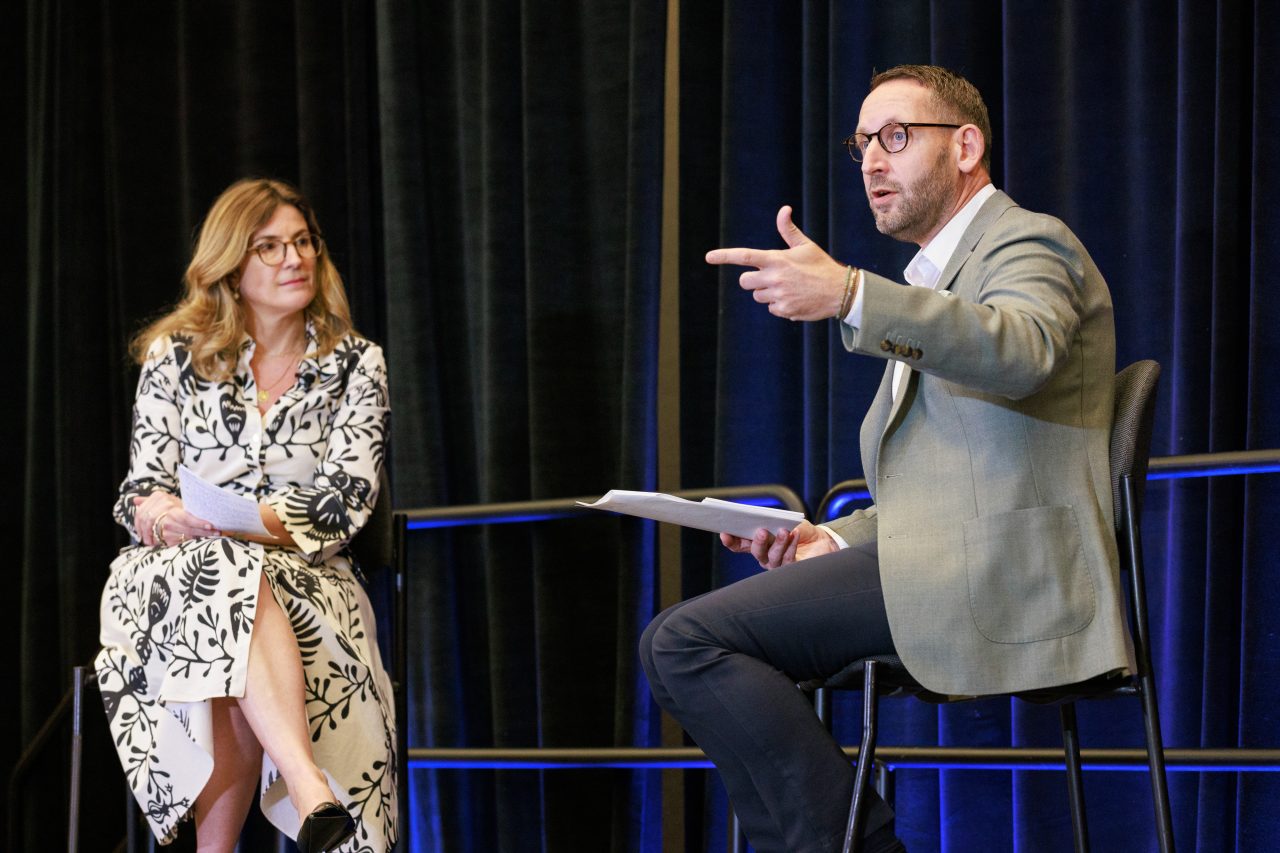Rethinking the Talent Life Cycle as a Strategic Advantage

Organizations must completely rethink how they approach talent to thrive amid disruption. Instead of thinking of talent acquisition as a series of transactions, envision it as a connected, evolving strategy, said Gaëlle de la Fosse, president of LHH, and Adam Hawkins, head of search and staffing for EMEA and LATAM at LinkedIn, during their presentation at SHRM25 in San Diego.
The urgency behind this shift is backed by data. According to the 2025 SHRM State of the Workplace report, 43% of HR professionals named recruiting as their top priority across 16 HR practice areas, highlighting the growing pressure to attract and retain talent in a competitive market.
The same report found that 42% of employees’ intent to leave is tied directly to their experience and engagement at work, underscoring the importance of investing in internal mobility, development, and growth.
Forward-thinking HR leaders must turn these pressures into a strategic advantage, said de la Fosse and Hawkins.
The Case for a Cohesive Talent Strategy
De la Fosse argued that, in the face of this disruption, companies must abandon the legacy view of talent as a linear path — hire, train, promote, exit — and instead adopt a 360-degree view of the workforce.
“When we think about the talent life cycle as a single, fluid system,” she said, “we can connect hiring to onboarding, development to mobility, and reskilling to retention.”
This holistic approach allows organizations to respond more nimbly to business shifts while helping employees see a future for themselves within the company.
As Hawkins noted, career progression today is rarely upward and often lateral — what he described as a “jungle gym” rather than a ladder. But enabling that kind of mobility requires more than good intentions. It demands real infrastructure: coaching programs, upskilling pathways, and internal systems that surface hidden capabilities.
“Everything we do in HR needs to be connected,” de la Fosse said. “Because the employee journey doesn’t end at the offer — it evolves every day.”
AI’s Quiet Transformation
Artificial intelligence is already reshaping job roles, but these changes are happening without formal strategies or leadership awareness, in what de la Fosse called AI’s “quiet transformation” of organizations. While nearly half of the executives surveyed by LHH said that their organizations had eliminated roles due to AI, only 1.4% of affected employees recognized AI as the reason. That disconnect, de la Fosse noted, is dangerous.
“AI is not just a tool — it’s redefining what work looks like,” she said. “But most companies aren’t preparing their people fast enough.”
Hawkins agreed, adding that 75% of employees are already using AI tools independently, often without organizational support, according to LinkedIn data. This groundswell of experimentation is creating a widening gap between AI-literate “superworkers” and those at risk of being left behind.
Recruiters as Strategic Guides
One of the clearest areas of AI-driven change is recruiting. As AI automates much of the administrative burden — scanning resumes, scheduling interviews, and assessing skills — the job of the recruiter is becoming more human and more strategic.
“The value isn’t in screening anymore,” Hawkins said. “It’s in selecting and in uncovering potential.”
Recruiters now have to be storytellers, consultants, and data-savvy talent advisors. They must understand not only what skills the business needs today but also how to match existing talent to those needs, unlocking growth from within. De la Fosse emphasized that this requires upskilling recruiters themselves — especially in areas such as data literacy and AI fluency.
Coaching at Scale: Unlocking the Workforce of Tomorrow
Perhaps the most profound shift, both speakers noted, is cultural. Employees today want more than just a paycheck; they want purpose, growth, and the freedom to evolve. That’s why coaching and leadership development are becoming foundational elements of the employee experience.
The positive outcomes of purposeful leadership are backed by research. Compared to U.S. workers with less effective managers, those with highly effective managers are twice as likely to feel satisfied and fulfilled by their jobs — and more than twice as likely to feel a deep sense of commitment, belonging, and value within their organization, according to SHRM’s Effective People Managers report.
De la Fosse emphasized that coaching is no longer reserved for the executive suite. In a world of constant transformation, it must become a scalable tool for empowering managers and employees at every level. She noted that widespread access to coaching helps build a culture where change feels supported — not imposed — and where employees are more likely to grow with the organization instead of out of it.
Was this resource helpful?



